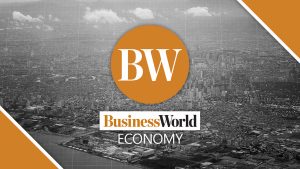THE Philippines could forego about P3.97 billion in government revenue as a result of its tariff deal with the US, think tank IBON Foundation estimated.
In its IBON Birdtalk Midyear 2025 briefing Friday, Jose Enrique A. Africa, executive director at IBON Foundation, said the revenue foregone as a result of the trade concessions include P1.6 billion from automobiles, P1.2 billion from wheat, P730 million from soy, and P440 million from pharmaceuticals , he said.
He added that this scenario assumes only a selected range of US products is admitted tariff-free.
“If US President Donald J. Trump is to be believed about Philippine going ‘open market’ with 0% tariffs on all products, we roughly estimate a P31-billion revenue loss,” Mr. Africa said.
President Ferdinand R. Marcos, Jr. said many details still need to be worked out on the recent negotiations, which reduced the Philippine tariff rate to 19% from 20%.
The final Philippine rate is two percentage points higher than the 17% “reciprocal tariff” initially announced in April.
“The bigger problem is the loss of policy space. The fact that we’re giving so much to the US, while even forgoing our own protection on the argument that, oh, we don’t have a car industry anyway, that kind of is a bit shortsighted,” Mr. Africa said.
He said the Philippine negotiating performance was poor relative to the deals negotiated by the rest of the region.
He said Vietnam reduced its initial 46% tariff to 20%, with a 40% escalator for goods transshipped through Vietnam.
Indonesia shaved its initial 32% tariff rate to 19%.
“A one-sided deal has actually become worse because of the poor negotiating leverage and the poor negotiating posture of the Marcos administration,” he said.
Separately, Rosario Bella Guzman, executive editor and head of research at Ibon Foundation, flagged the economy’s “steady decline and accelerating political decay.”
“We are seeing economic growth slowing… and the limits of investment-driven growth,” Ms. Guzman said.
The economy has to grow by an average of 6.6% in the next three quarters to reach the middle of the range of the downgraded 5.5% to 6.5% government target — an outcome she called “impossible.”
Gross domestic product (GDP) grew by a weaker-than-expected 5.4% in the first quarter and 5.7% in 2024.
These are both lower than the pre-pandemic growth rate of 6.1% in 2019 and the 6.9% posted in 2012.
Ms. Guzman said poverty and hunger are worsening three years into the Marcos administration.
IBON estimates that the number of families rating themselves as poor has grown to 14.1 million as of the end of April, from 12.2 million in June 2022, at the start of his term.
Meanwhile, Mr. Africa said the “accomplishments” expected to be presented in the upcoming July 28 State of the Nation Address are “micro efforts” that are too small to address poverty, the need for agricultural reform, and national industrialization.
He said agriculture is being “deprioritized” with its share of the national budget falling to 3.9% in 2025 General Appropriations Act from 4.1% in the 2024 budget.
Also, agriculture growth under Mr. Marcos average 0.2% between the third quarter of 2022 to the first quarter of 2025. The equivalent growth rates were 1.2% for his predecessor Rodrigo R. Duterte and 3.5% for former President Benigno S.C. Aquino III. — Aubrey Rose A. Inosante

